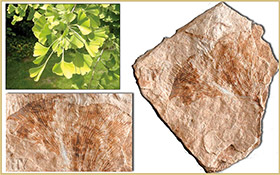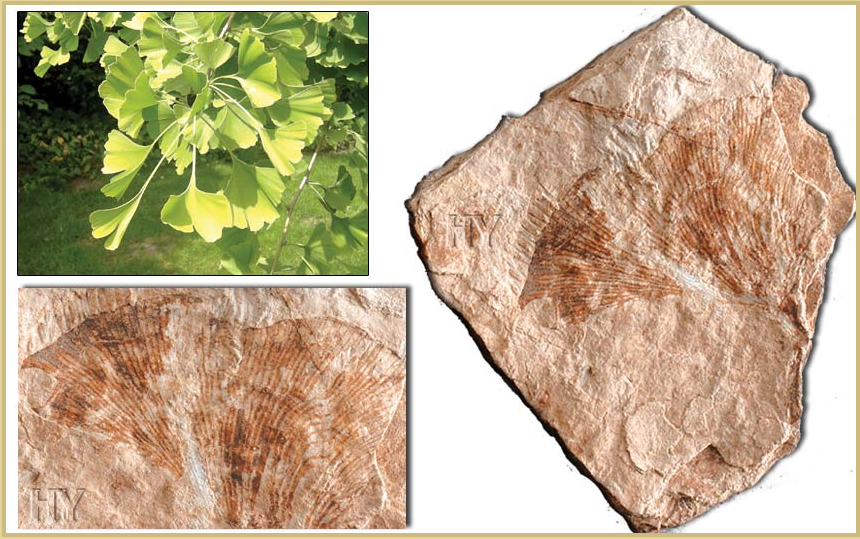
The "ginkgo biloba" tree is a living fossil that has remained from the Permian period (270 million years ago) to the present day. In fact, ginkgos were in existence during the eras when dinosaurs still roamed the earth. In November 2016, a scientific article in the "Giga Science" magazine published the gene sequence of ginkgo biloba trees. Scientists from the Beijing Genomics Institute, Zheijiang University and the Chinese Academy of Sciences conducting the research tackled and analyzed an exceptionally large genome (the total of the genetic codes found in the chromosomes of an organism), which consist of a total of 10 billion DNA letters. Despite these challenges, scientists continued to work on this plant, as it is one of the living fossil specimens like the nautilus and the horseshoe crab. Wenbin Chen of the Beijing Genomics Institute expressed that a huge amount of raw data was generated, as large as 2 TB (1 terabyte: 1 trillion bytes) in the study for the huge amount of data and the computing capability for assembling genomes. An initial analysis of the tree's more than 40,000 predicted genes showed extensive expansion of gene families that provide for a variety of defensive mechanisms. Genes that enable resistance against pathogens (all kinds of organisms and substances that cause disease) are often duplicated in the genome of the tree.
Professor Yunpeng Zhao from Zheijiang University emphasized that the ginkgo represents one of the five living groups of seed plants. Ginkgo is a completely unique tree that has no relatives. Botanists place Ginkgo in a separate category (Ginkgophyta) in the plant kingdom (Plantea).
It is a unique plant with its fan-shaped leaves that is unparalleled among other tree species.
The fact that they are generally extremely resilient to plant diseases, their consummate self-defense against plant pests, and their capability of forming additional roots and buds on the surface allow the ginkgos to be very long-lived. Ginkgos have dual defense systems that allow them to synthesize chemicals that keep insects, bacteria, and fungi away on one hand, while releasing volatile organic chemicals that specifically attract the enemies of plant-eating insects on the other. Some ginkgo trees can live up to 2,500 years.
An interesting feature of the ginkgo is its being one of the most durable trees in urban environments (in other words it is resistant to air pollution), thriving even in conditions where other trees cannot persist. Ginkgos can grow in all kinds of damp, and even sandy, soil. On the shore, it can also tolerate sea salt.
Extreme examples of the tenacity of ginkgos were seen in Hiroshima. Four ginkgo trees growing only one or two kilometers distance from the site of atomic bomb’s hypocenter are the only living specimens in the area that survived the blast, albeit partially charred, and have managed to continue their existence to date.
This tenacity has also helped ginkgos endure even during glacial periods in China, which killed most species. The experiments in a recent study have revealed that ginkgo biloba extracts is helpful against the harms of electromagnetic waves emitted by cell phones to the brain.
The Significance of Ginkgo Tree’s Being a Living Fossil
During his research, Darwin was astounded when he discovered a fossilized version of the leaf of a ginkgo tree. The same as a living thing that is in existence today was present in millions-year-old layers in the same shape as it is today. This fossil, which is sufficient to bring Darwin's theory to a deadlock and really had him worried, would be dubbed a ‘living fossil’ by Darwin himself.
If Darwin had been living in the present, his concern in this regard would surely have been much greater because ginkgo, as we have already mentioned, is not the only living fossil that has survived until today. A part of more than 700 million fossils extracted from the earth's strata comprise of complete and perfect extinct species while its great majority are living fossils. Millions of years old fossil samples belonging to most of the currently existing species have been found and put on display. If evolution had occurred as Darwinists claim, there would have been millions of transitional fossil examples on earth, not millions of living fossils that remained unchanged. Evolutionists must have constantly found in the fossil records transitional life forms that have allegedly changed from one living thing to another, and discovered trillions of so-called ‘evolving ones’. Evolutionists, however, have yet to find even a single transitional fossil; they have failed to even present a single organ sample that is undergoing change in a single life form. As seen in the ginkgo leaf below from the Eocene epoch (54-37 million years ago), life forms have not undergone any change despite the millions of years of time difference between them; they were created by God, our Creator in exactly the same form that we see in modern living specimens.
The 50 million-year-old ginkgo leaf seen in the image above is one example of the evidence that renders Darwinists scenario of plant evolution invalid. Just like all other fossil samples, this fossil poses a great dilemma for all evolutionists, making it evident that ginkgos have always existed as ginkgos, and they were neither derived from nor evolved into any other plant species. |
SOURCES:
https://www.sciencedaily.com/releases/2016/11/161121175806.htm
www.wikipedia.com



